Papers by Mikiko Nishimura
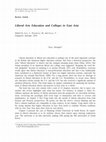
Springer eBooks, 2016
Liberal education or liberal arts education is perhaps one of the most important concepts in the ... more Liberal education or liberal arts education is perhaps one of the most important concepts in the British and American higher education systems. But from a historical perspective, the term "liberal education" is elusive and has changed meaning many times (Shen, 2016). One former president of an American liberal arts college even suggested "dropping the word liberal altogether" because its meaning is so unclear (Ferrall, 2011, p.8). Nonetheless, everyone would agree that liberal education is non-professional education and that it has traditionally been considered as a distinctive feature of these two higher education systems, especially the American one (Joseph Ben-David, 1980). For a long period, there has been no shortage of research on liberal education in the U.K. and the U.S. Nevertheless, in recent years, liberal arts education reform outside the U.S. and the U.K. has also received a signifi cant amount of attention (Peterson, 2012). This book makes its unique contribution by analyzing the development of liberal education theory and practice in East Asia as a whole. The book has very rich content with a total of 15 chapters; however, due to space constraints, this review highlights only some key points. For instance, in chapter 2, Akira Tachikawa analyzes the history of liberal education from the perspective of curriculum development, reviewing the paradigm shift from logic to humanities and then to science and mathematics. In chapter 3, Rui Yang looks into the model of liberal education from both Eastern and Western perspectives. He points out that the West's critical thinking and the East's cultural traditions are compatible in some respects. In his chapter, Yang shares with us his strong opinion that higher education in East Asia needs to combine Western traditions with its own. East Asia must draw from its own history. Chapter 4 presents the case of Handong Global University in South Korea. Its experiment in liberal education is to let students choose their majors upon entering sophomore year. The university is an elite university ranking 10th among the 400 universities in South Korea.
Oxford University Press eBooks, Feb 23, 2023

Journal of International Cooperation in Education
PurposeThis research explores the impact of the locally grown strategies for learning support, as... more PurposeThis research explores the impact of the locally grown strategies for learning support, as a positive deviance (PD) study, during the COVID-19 pandemic in rural Uganda.Design/methodology/approachThe researchers employed a randomized control trial (RCT) as an original design whereby 50 schools received a full package of SMS and WhatsApp peer groups of head teachers, 50 schools received SMS only and another 50 served as a control group. As an analytical method, this study adopted a difference-in-difference (DID) model to analyze the impact of the radio talk shows promoted through SMS followed by discussion among WhatsApp peer groups. The data collected in June 2021 and February 2022 were used due to the COVID-19-related data limitation of the baseline survey collected in 2019.FindingsThe authors found that the local radio talk shows as a PD intervention had a humble impact on preventing pupils’ dropout during the school closures for two years in Uganda. However, the authors did...

Universal Primary Education (UPE) policy in the form of fee abolition has become popular in many ... more Universal Primary Education (UPE) policy in the form of fee abolition has become popular in many countries in sub-Saharan Africa (SSA) since the mid 1990s in order to achieve Education for All (EFA). Even after learning from the past, the current UPE policy is devoid of analytical studies on its impact and challenges beyond school enrollment. This paper is an attempt to make a comparative analysis on UPE in four countries, namely, Ghana, Kenya, Malawi, and Uganda, to identify common and unique themes and to examine how these seemingly similar policies are responding to the capacity and needs of each country. The results show that effective policy implementation would require considerable consultation with key stakeholders and a baseline survey that will enable systematic implementation and consideration of equity. Mutual accountability and a responsibility mechanism between the government and parents/communities is also a key to the sustainability of the UPE policy.
Community Participation with Schools in Developing Countries, 2020
Comparative Analysis on Universal Primary Education Policy and Practice in Sub-Saharan Africa, 2015

Policy Debates in Comparative, International, and Development Education
Universal Primary Education (UPE) policy in the form of fee abolition has become popular in many ... more Universal Primary Education (UPE) policy in the form of fee abolition has become popular in many countries in Sub-Saharan Africa (SSA) for achieving Education for All (EFA) since the mid-1990s (Avenstrup et al. 2004; UNESCO 2008). Among 54 low-income countries, 15 countries have already introduced fee abolition policies and 10 countries are either at the planning stage or have shown interest in adopting fee abolition, among which 11 and seven of the latter countries are in SSA (see table 12.1). Despite its recent rapid expansion, UPE policy has a long history in SSA. Existing literatures indicate that previous attempts to achieve UPE in developing countries faced problems in its supply-driven policies, unclear mechanisms, and low quality of education (Allison 1983; Bray 1986; Prince 1997; Sifuna 2007). The past experiences in countries such as Nigeria and Kenya also show that UPE policy implementation was prone to be affected by economic crisis (Obasi 2000; Sifuna 2007). A number of lessons exist from the past; however, the current UPE policy severely lacks analytical studies on its impacts and challenges beyond school enrollment (Nishimura et al. 2008). Furthermore, some researchers have indicated the recent uniformity of the educational policies that prevail in SSA countries and suggested that there should be studies to examine how these seemingly similar policies are responding to the capacity and needs of each country (Samoff 1999; Foster 2000; Brown et al. 2001; Klees 2001).
World Development, 2013
The number of private schools has increased by more than four times since the introduction of the... more The number of private schools has increased by more than four times since the introduction of the Free Primary Education (FPE) policy in 2003 in Kenya. With the help of panel data obtained from rural Kenya, we observed that the proportion of children attending private primary schools increased from 4.6% in 2004 to 11.5% in 2007. The estimation results suggest that parents react to the quality of public education, as measured by the pupil-teacher ratios of public schools, by attending private schools and transferring to different schools. Their reaction also depends on the wealth of households and gender.
Bray, M. (1986). If UPE is the answer, what is the question? A comment on weakness in the rationa... more Bray, M. (1986). If UPE is the answer, what is the question? A comment on weakness in the rationale for universal primary education in less developed countries.
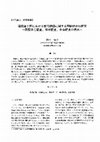
The article attempted a theoretical comparative analysis on educational evaluation methodologies ... more The article attempted a theoretical comparative analysis on educational evaluation methodologies to examine the ways in which educational evaluation can lead to effective education policies and planning in developing countries. Three major surveys, namely, international student assessment, school survey, and household survey were compared and contrasted and the missing links were identified. It was found that the existing international student assessments have defects in its target groups and data collection method, while school survey and household survey also overlook a comprehensive focus on both supply and demand sides of education. The results of these surveys occasionally confront discrepancies, especially in developing countries where a number of out-ofschool children and dropouts exist. Thus, a comprehensive assessment of these surveys is essential. Furthermore, qualitative research would be required for a complementary analysis for inferences from the quantitative data, particularly for critical issues such as non-enrollment and dropout.
Journal of International Development Studies

In the international sphere, gender equality is primarily discussed in relation to the gender par... more In the international sphere, gender equality is primarily discussed in relation to the gender parity index (GPI), a female to male ratio of enrollment. This paper attempts to adopt a wider scope of gender equality that includes continuous learning and achievement. By using the data from 306 primary schools in rural Senegal, collected by the Japan International Cooperation Agency Research Institute (JICA-RI), this paper examined school factors that affect the gender gaps in internal efficiency and learning achievement by considering policy input and the environment at the school level. The results show that the existence of a school management committee (“CGE”), is associated with lower dropout rates for both boys and girls and that the amount of financial contribution made by a CGE is correlated with fewer gender gaps in the number of dropouts and the repetition rate. We also found that providing parents with a periodic report on students’ attendance and learning achieveme nts as we...

Education Innovation Series, 2018
Each chapter of the book discussed the concrete strategies that pursue key values of liberal arts... more Each chapter of the book discussed the concrete strategies that pursue key values of liberal arts education in the different parts of the world. The cut-across core values of liberal arts education are very much tied to students’ experience as a critical thinker and a future change agent of the world. Practices pay much attention to generating critical thinking, interdisciplinary and integrated learning, civic engagement with a sense of social justice and equity, and deep understanding of various cultural and theoretical perspectives. While these core values had been consistent in liberal arts education in its long history, more recent phenomena are seen in the modes and methods that embody core values in the educational programs. Advanced information technology and international exchanges of students and programs expanded the scope of students’ experiential learning. There is also more emphasis on evidence-based policy-making and efforts to measure tangible learning outcomes of lib...

Education Innovation Series, 2018
Despite the rising demand for vocational and practical education, the values of liberal arts educ... more Despite the rising demand for vocational and practical education, the values of liberal arts education are still highly regarded, and many higher education institutions have been integrating liberal arts education as an approach to the development of a well-rounded education, flexible and creative thinking, civic engagement, and internationalization. For instance, several of the oldest, private liberal arts colleges in the USA continue to thrive and attract first-class students (Chopp R, Frost S, Weiss D (2013) Remaking college: innovation and the liberal larts. Johns Hopkins University Press, Baltimore). East Asian universities, particularly those in Japan, South Korea, Taiwan, and China, show an increasing interest in liberal arts education, and small, independent dedicated liberal arts colleges and general education programs have been developed in these countries (Jiang YG (2014) Liberal arts education in a changing society: A new perspective on Chinese higher education. BRILL, L...

The elimination of school fees from public primary education under the Free Primary Education (FP... more The elimination of school fees from public primary education under the Free Primary Education (FPE) Policy in Kenya in 2003 has increased enrollment by 22 percent in the first year alone. Some experts, however, suggest that the FPE has reduced the quality of education in public schools and increased the number of students who transfer from public to private schools. To obtain a better understanding of the school choice in Kenya, we estimate the school choice between public and private primary schools and track primary school children over a period of three years to identify the factors associated with school transfers. We find that the proportion of children attending private schools indeed increased from 4.8 to 12.2 percent, especially among children in relatively wealthy households, from 2004 to 2007. We also find that the school quality, measured by the Kenya Certificate of Primary Education exam score at the school level, has a positive impact on the choice of private schools. R...

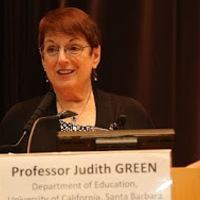


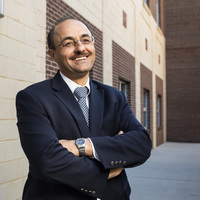
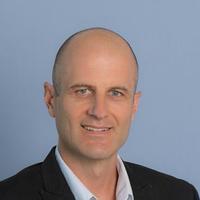

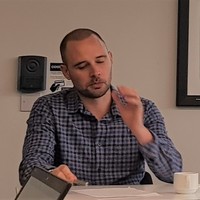


Uploads
Papers by Mikiko Nishimura